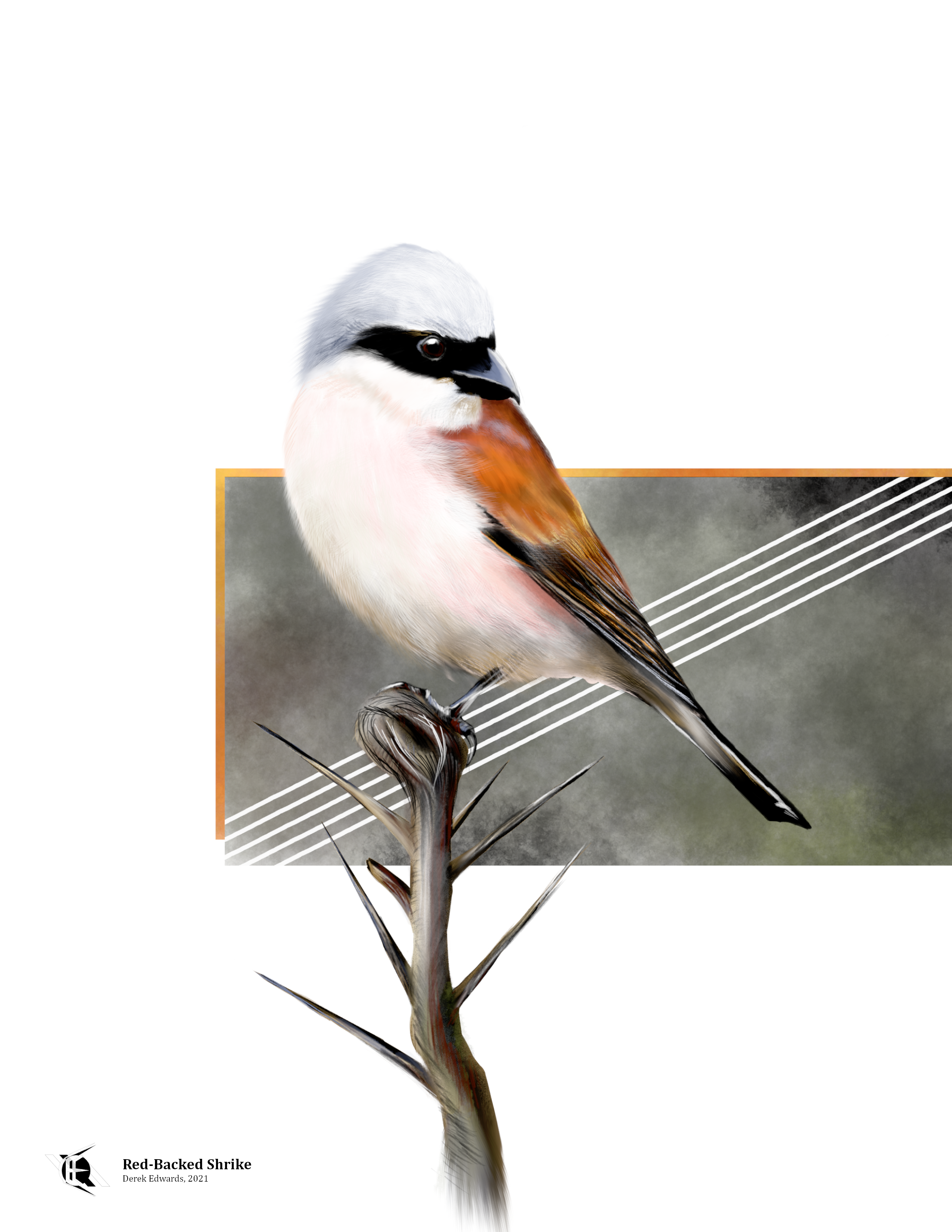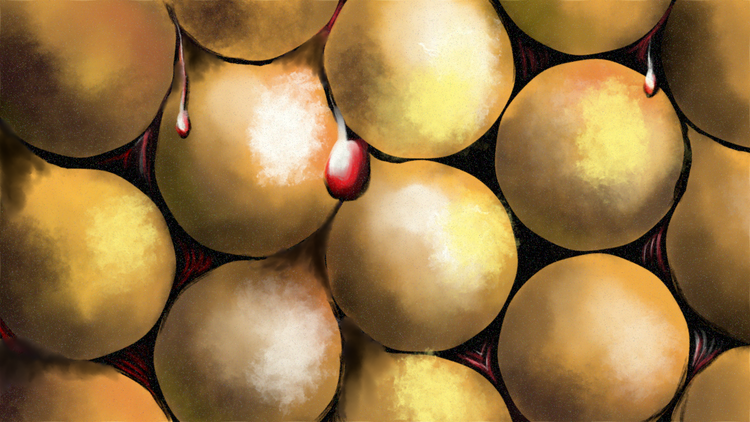
Running Commentary 11/1/2021
Hello,
364 days ago, 52 Mondays ago, on November 2nd, 2020, the first edition of A Running Commentary was posted. That makes this edition the newsletter's first anniversary. I'm kind of surprised I've been able to keep it a weekly thing all this time. Sure, I took a few weeks off, here and there, when I had weekend plans that precluded being able to write anything. But the regular schedule remains weekly, on Monday mornings. I'm most especially surprised I've been able to keep Bird of the Week going for a year; I do not draw a bird absolutely every week (though I do most weeks) and I also have a pretty finite back catalog of bird drawings to, well, to draw from, on weeks I haven't drawn anything new. At some point I'll run out of those, and have to either actually draw a bird every week or else start re-running old ones, but I'm not at that point yet.
Anyway...
Watching...
This week I take a look at Science SARU's "T0-B1":

- This short is...for a younger audience than the others, I guess is how I'll put it. The art style is very cutesy, and the protagonist is a child, but what really makes this a kid's film is the sound design. There are a lot of cartoony sound effects in this, even in the comparatively dark scene of the duel against the Inquisitor. I found these a bit distracting and annoying, but kids would probably appreciate them.
- The editing here was a bit surreal, with shots sort of cross-fading into one another. I wonder if this was an attempt to get the short down under 15 minutes. It became a bit hard to follow, but that might have been intentional. Whatever the reason, the effect is more dream-like than frenetically chopped together, the way "The Twins" came off.
- The idea of a droid combined with a crystal being able to wield the Force actually isn't new to Star Wars. The Scholastic-published children's series Star Wars: Missions featured "Iron Knights", sentient, Force-sensitive crystals who inhabited droid bodies in order to serve as Jedi. The Iron Knights are a fairly obscure bit of Star Wars lore, so I'm not sure if T0-B1 is a deliberate reference to them or not.
- The name "T0-B1" is an interesting dual nod to the actual names of both Ben Kenobi and Astro Boy, an early anime character.
- Add Kyle Chandler to The List
Reading...

I'm not generally a person who enjoys being scared, or even contemplating scary things; that's a big reason why I don't celebrate Halloween in any meaningful way. (For me, late October is simply Reese's Cups season, the way early August is blueberry season.) On recommendation that "it's more creepy than scary and it's really well done" I once tried to watch The Haunting of Bly Manor. I quit after one episode. I'm generally better off reading horror than watching it; I think I could probably get through A Turn of the Screw just fine as a book. But even still, that's not generally what I read.
So how did I come to read John Langan's The Fisherman? Basically, I heard of a good book set during the construction of the reservoirs in upstate New York. I'm not from upstate New York; I've never even been there. But, living in the non-metro area of another state, which was the new home of a lot of upstate New Yorkers back in the day, has left me feeling a sort of affinity for the region. The story of how whole valley communities were demolished to make way for the infrastructure that provides water to NYC is an interesting one, and it provides a fittingly somber backdrop in this novel. I won't spoil this book, but I will say that it's not the kind of horror that gives one nightmares or makes one startle and shadows. It's like a fairytale without the pat happy ending.
The book is structured in three parts: the first and third set in the modern day, the second, much longer than the others, being the story set in the reservoir-building days. Honestly, this middle part is the stronger part of the book, and Langan could have easily left it to stand alone. But the framing device works, and the conclusion of Part Three is stronger than that of Part Two. This book was good. 8/10

Bird of the Week
When you think of a bird of prey, you probably think of one of the Acciptitriformes: a hawk or an eagle. Or maybe you think of a falcon, or perhaps an owl, which each make up their own orders. You probably don't think of a member of the Passeriformes, which are your typical perching birds, the songbird order.
The Red-Backed Shrike is a widely distributed member of the shrike/fiscal family Laniidae, which are known for their carnivorous diets. The red-backed shrike is rather typical in size among shrikes, being just a bit smaller than an American robin. Shrikes eat insects and small vertebrates, including frogs, reptiles, small mammals, and other birds; they are able to do so by impaling their prey on thorns, barbed wire, or any other convenient sharp point, and using their hooked beaks to tear that prey into more manageable pieces. These birds are thus also sometimes called "butcherbirds".
Shrikes come in a variety of colors. The northern and loggerhead shrikes, which live in North America, are both plumaged in shades of grey. Those found elsewhere are generally either grey or brown. The red-backed shrike is found throughout Europe and western Asia during the summer; it winters in eastern and southern Africa, where it shares space with its cousins, the fiscals. (Fiscals are not physically distinct from other shrikes. Their name comes from an Afrikaans word for a public official which is also a euphemism for "hangman", a nod to their hanging prey from spikes.) Nearly all shrikes/fiscals exhibit a black eye-mask.
The red-backed shrike is known to science as Lanius collurio. "Lanius" is the genus holding most shrikes and fiscals; the name is the Latin word for "butcher". "Collurio" comes from the Greek κολλυριων, which Google translates as "eye drops", though that may not be correct. κολλυριων was the name given by Aristotle to some thrush-sized bird or another, which many people, including Linnaeus, who named this bird for science, believe was a shrike.
See the full archive of birds on Notion

Curation Links
The Bizarre Cultural History of Saliva | Frank Gonzalez-Crussi, The MIT Press Reader
Excerpted from Gonzalez-Crussi's book The Body Fantastic, "which looks at the human body through the lens of dreams, myths, legends, and anecdotes of the bizarre, exploring the close connection of the fictitious and the fabulous to our conception of the body." This selection specifically addresses saliva, which, depending on the time and place, was considered a private matter best concealed, a forceful curative of eye disease, or simply another fact of life.
Here’s Why Juicero’s Press is So Expensive | Ben Einstein, The Bolt Blog
As the Christmas shopping season approaches, let's take a look back at the Juicero, the would-be hot gift of 2017 for the affluently health-conscious. Infamously tasked with nothing more than squeezing the juice out of a bag of pre-mashed fruit, the Juicero was something of a marvel. The flood of funding the company got ahead of the actual design state allowed them to side-step the design constraints most engineers face when designing consumer products. The result: the best juice-bag squeezer possible, with what turned out to be a much higher price tag than was possible.
The last man who knew everything | Mathew Walther, The Week
In the early days of the scientific age, there were polymaths, people who studied in many fields and could claim to be experts in all matters. But as more was learned, more was written, and more new lines of inquiry were discovered, intellectualism became specialized. Here, Walther reviews Rebecca Tope's Sabine Baring-Gould, The Man Who Told a Thousand Stories, a biography of an Anglican clergyman who wrote authoritatively on every subject a 19th-Century Englishman might hope to learn about.
What Is Eve? | Will McIntosh, Lightspeed Magazine
[FICTION] "'From this moment on, you are to keep the earpiece in your left ear at all times—even when you’re sleeping.” Ms. Spain held up an earpiece so we could find ours in our packets. They were pea-sized and clear, and when you put them in your ear, they stuck down where you couldn’t see them. “Whenever a prompter says something to you through your earpiece, you are to immediately repeat it aloud.” She held up a finger. “Unless the first word is Direction or Do not repeat. A Direction is something you are to do, not say. If your prompter begins with Do not repeat, he or she has something to say to you. If it’s a question, answer out loud. Does everyone understand?'"
See the full archive of curations on Notion






Member Commentary